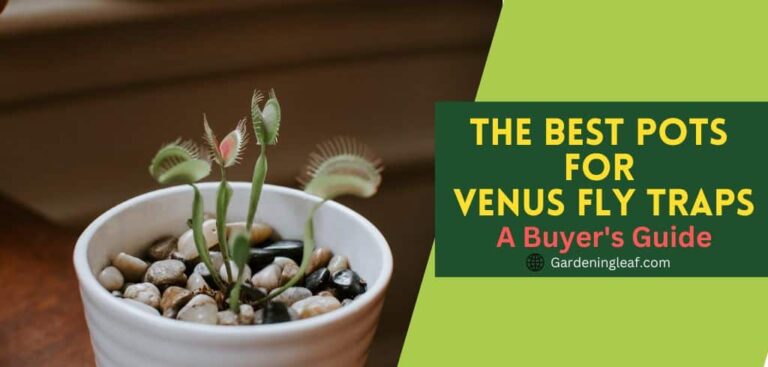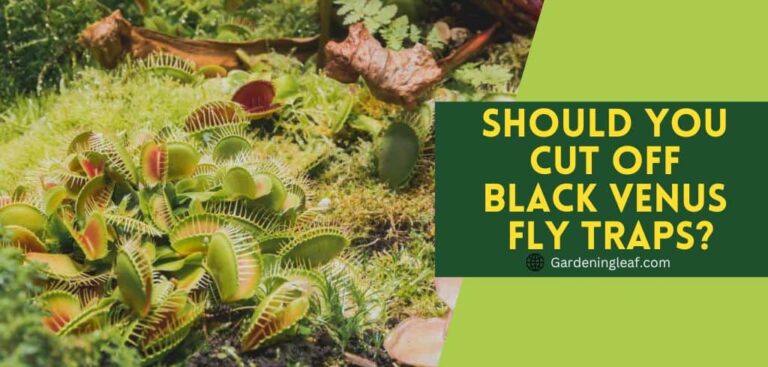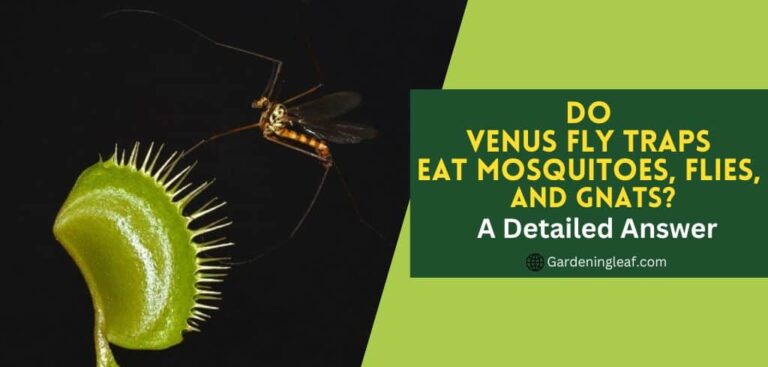How Long Can A Venus Flytrap Live Without Food? Mystery solved
The Venus flytrap plant is known as Venus flytraps (Dionaea muscipula). A carnivorous plant is often kept as a houseplant. This plant has fascinated people for years with its unique mechanism for trapping and digesting insects.
Venus Flytraps are fascinating carnivorous plants that can survive on insects and spiders as their only food source. A common question arises: “How long can a Venus flytrap live without food?” In this article, we uncover the answer and learn more about the amazing plant.
How long can a Venus flytrap live without food?
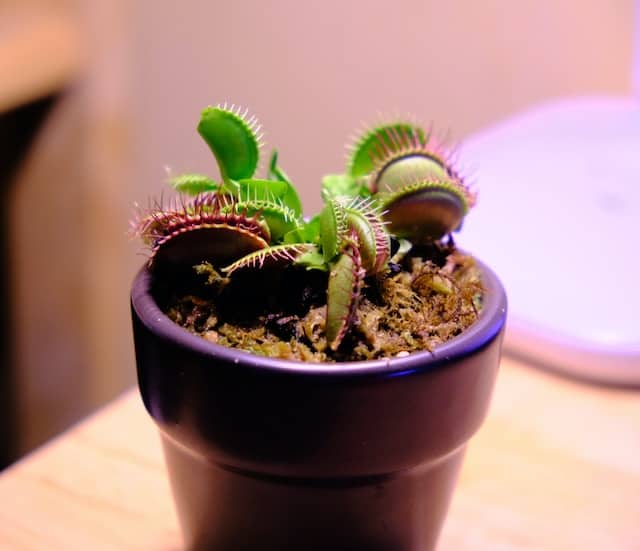
Like other plants, Venus flytraps need sunlight, soil, and water to survive. These essential elements aid in performing photosynthesis.
It enables the production of nutrients necessary for their growth. Although insects serve as added sources of nutrients, they are not mandatory for survival.
But, if a Venus flytrap is kept without prey for an extended period. It may show signs of nutrient deficiency, and growth may slow down. Additionally, with access to insects, the plant may keep its ability to trap and digest prey.
In general, a Venus flytrap can endure without food for several months. But, providing them with proper growing conditions is necessary to maintain their health and survival.
So while they can survive without bugs, it won’t make them healthy or happy.
Feeding is essential to keep your Venus flytrap healthy and thriving. This can include small flies, spiders, and other small bugs the plant can catch and consume.
You can offer small pieces of raw meat or canned tuna fish to avoid feeding your Venus flytrap live insects.
Read More:- Do Venus Fly Traps Eat Mosquitoes, Flies, And Gnats? – A Detailed Answer

Anatomy of a Venus Flytrap
The anatomy of the Venus Flytrap is complex and specialized. It consists of a modified leaf that has been transformed into a trap. The trap is made up of two lobes connected by a hinge.
Each lobe has three sensitive trigger hairs. Which causes the lobes to snap shut when disturbed.
When an insect lands on the Venus Flytrap and touches the trigger hairs. The trap shuts within a fraction of a second, trapping the insect inside.
The lobes are lined with small, hair-like structures called cilia. These help prevent the insect from escaping.
Once trapped, the Venus Flytrap secretes a digestive enzyme that dissolves the insect’s body. The plant then absorbs nutrients. It provides it with the necessary nutrients to survive in nutrient-poor soils.
Nature and Nutritional Requirements
The Venus flytraps are a result of its native environment’s poor soil conditions. The soil in these areas lacks the necessary nutrients like nitrogen and phosphorus.
Those nutrients are essential for plant growth.
So, the Venus flytrap has evolved to get these nutrients by consuming insects, which enables the plant to survive and thrive. Without the ability to trap and digest insects.
The Venus flytrap would struggle to get the nutrients it needs to grow and flourish.

Trapping Mechanism
When an insect comes into contact with the trigger hairs on a Venus flytrap’s trap, it triggers a rapid closing mechanism.
The lobes snap shut within milliseconds, trapping the prey inside. Using this mechanism, the plant can conserve energy.
Digestion Process
Once a trap has closed, the Venus flytrap secretes digestive enzymes onto the trapped insect.
These enzymes break down the insect’s soft tissues, releasing valuable nutrients. The digestion process takes several days, after which the trap reopens.
Energy Storage and Resource Management
Venus flytraps divide and store energy obtained from their prey. The plant converts captured insects into vital nutrients. Which are transported and distributed throughout the plant. This energy storage allows Venus flytraps to sustain themselves during no prey availability.
Read More:- How to Grow a Venus Fly Trap from a Seed
Environmental Factors
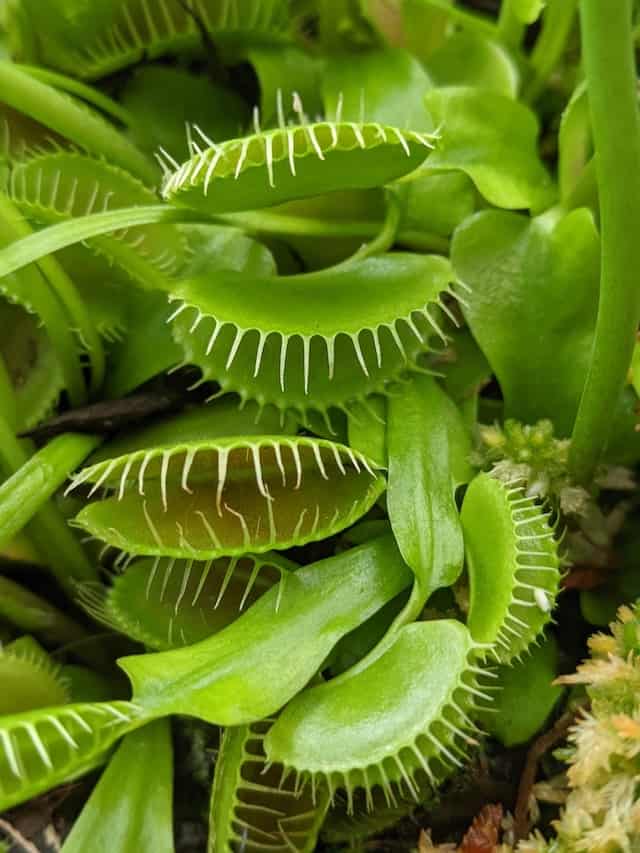
The availability of insects influences the Venus flytrap’s lifespan without food. In their natural habitat, these plants have access to a steady supply of insects. However, prey availability may be scarce in artificial environments or during certain seasons. It’s impacting the plant’s survival.
Dormancy Period
In the winter season, the Venus flytraps experience a phase of dormancy. In which their growth decelerates, and metabolic activity decreases.
This adaptation helps them save energy when there aren’t enough insects. Venus flytraps can survive for several months without food while in a state of dormancy.
Adaptations for Survival
Venus flytraps have several adaptations. That aids their survival during periods of limited food supply. Their capacity to regulate their metabolic rate and enter a dormant state helps them conserve energy.
Additionally, producing smaller traps during scarcity helps Venus flytraps conserve energy.
These smaller traps need fewer resources to maintain and allow the plant to divide energy more efficiently.
By adjusting their growth patterns and trap sizes. Venus flytraps can maximize their chances of survival during periods without food.
Longevity in Captivity
When Venus flytraps are cultivated in controlled environments. Such as greenhouses or terrariums. Their lifespan can be significantly extended compared to their wild counterparts. With proper care, including adequate light, humidity, and nutrition.
If it gets alternative sources of nutrients. Such as a balanced insectivorous plant fertilizer. Venus flytraps can survive for several years without any insect prey.
Read More: – Should You Cut Off Black Venus Fly Traps?
How Often Should I Feed Venus Flytraps?
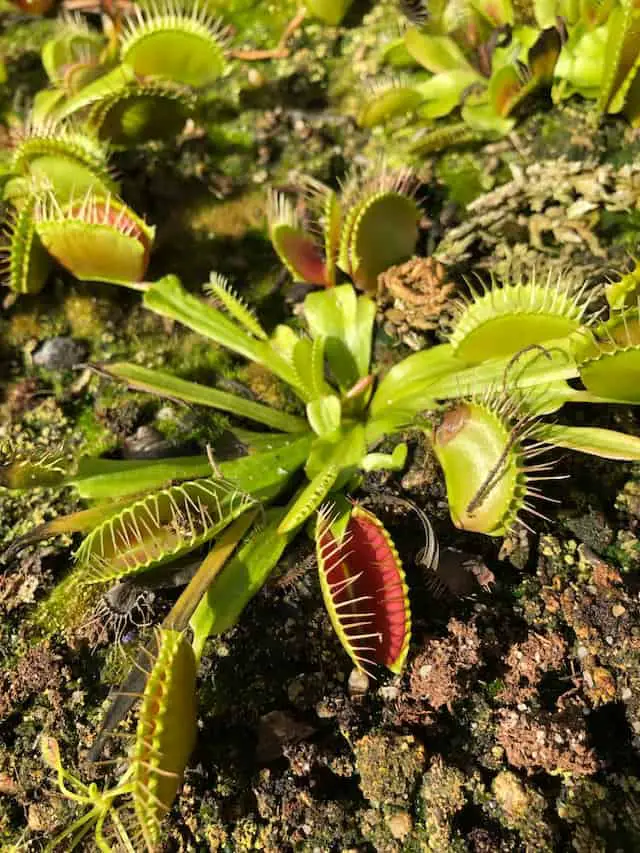
To give proper nutrition to your Venus flytrap. Feed them once a week or every two weeks throughout the growing season. The plant goes dormant during winter and won’t need as much food. Remember only to offer small insects or pieces of meat to avoid overfeeding and causing digestive issues.
Can Venus fly traps survive without flies?
Yes, Venus flytraps can survive without flies. But they need a steady supply of insects to flourish. The plant may survive without enough food but won’t be healthy in the long run. If you want to avoid feeding your Venus flytrap live insects. You can offer small pieces of raw meat or canned tuna fish as an alternative food source.
Does venus fly traps eat roaches?
Venus flytraps can eat small roaches that fit inside the trap. However, it is not recommended to feed your flytrap with roaches or any other large insects. as they can damage the plant’s sensitive trap mechanism. It is best to stick to smaller insects like flies and spiders that are easier for the plant to consume without causing harm.
Are Venus fly traps poisonous to cats?
Venus flytraps are considered mildly poisonous to cats if eaten in large quantities. This particular plant has been found to cause discomfort in the digestive system. Leading to symptoms such as vomiting and diarrhea. It is best to keep your Venus flytrap out of reach of curious cats and other pets. Consider growing in a designated area where they cannot access it.
Can Venus fly traps eat ants?
Yes, Venus Fly Traps can eat ants. Ants are one of the common insects that Venus Fly Traps feed on, along with flies, beetles, grasshoppers, and other crawling insects.
Can you feed Venus fly traps fish food?
You can feed Venus flytraps fish food as an alternative to live insects. But, choosing high-quality fish food without additives or preservatives that can harm the plant is essential. You can crush the fish pellets into small pieces and offer them to your flytrap using tweezers or toothpicks.
Can Venus fly traps eat rolly pollies?
Venus Fly Traps can eat rolly pollies. However, they are not the preferred food source and may not provide adequate nutrition. It is best to feed your Venus flytrap with various insects to ensure it receives all the necessary nutrients for survival.
How many bugs can a Venus flytrap eat a day?
Venus flytraps eat 1-3 insects per week and can go without food for several weeks if necessary. Feeding them too often or too much can harm the plant’s growth and digestion. So it’s best to stick to a moderate feeding schedule.
Conclusion
Venus flytraps can survive for several weeks without food. They feed on insects like ants, flies, and beetles. But can also consume fish food as an alternative. It is important to avoid overfeeding and offer various insect types to ensure the plant receives all necessary nutrients.
Source :- https://www.bhg.com/gardening/houseplants/care/grow-venus-flytrap/

